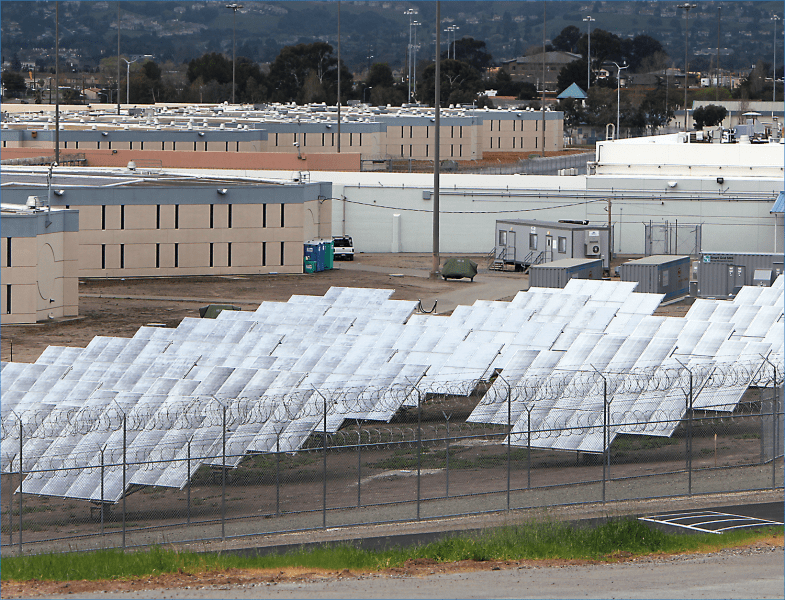As a consulting member of the California Hospital Building Safety Board’s (HBSB) Energy Conservation and Management Committee, I attended the committee meeting on Thursday, October 17, 2019 in Sacramento and I wanted to share some of my takeaways.
For a regular committee meeting, there was much inspiring and engaged discussion. Within the California healthcare community there is definitely an increased awareness of the importance of resilience and decarbonization to address climate change.
Presentation: Tour of the Santa Rita Jail microgrid installation
Presenter: Ryan Nelson, OSHPD
At the time of its installation in 2002, the Santa Rita Jail’s microgrid was the largest microgrid in the U.S. The presentation mentioned that the microgrid features some noisy, outdated equipment and proprietary controls.

My takeaways:
- Avoid having propriety controls that make operation and maintenance difficult.
- These types of solutions can be noisy, and, accordingly, as designers we need to consider their location and attenuation of the systems.
Presentation: Healthcare Without Harm
Facilitator: Robyn Rothman, California Healthcare Climate Alliance
This was an engaging presentation from by representatives from four of the big health care organizations, including Kaiser, Sutter Health and University of California, with Health Care Without Harm, a nonprofit leading the global movement for environmentally responsible health care. The presenters addressed the transition from a net zero approach to sustainability to a decarbonization approach.
My takeaways:
- Thermal microgrid: As we decarbonize, we should also think about storing and deploying energy.
- Reducing air change rates can have a marked impact on energy usage. Kaiser is evaluating the impact on infection control.
- As hospitals use a lot of hot water, we need to consider efficiencies in how we heat and distribute it as well as ensuring it’s available in emergency situations (i.e., power shutdown), remove to electric water heating.
- In terms of immediate energy reductions, LED lighting replacement is important. It’s good to hear that there will be additional guidelines provided by OSHPD to support and facilitate these projects.
Presentation: Energy-efficient, reliable, resilient microgrids for hospitals
Facilitators: Carol Denning and Tim Johnston, Clearway Energy, Inc.
This presentation highlighted a large hospital that’s supported by microgrid.
My takeaways:
- This was an interesting project because it was large-scale and used multiple sources of power: solar, fuel cells, micro turbines, gas turbines.
Update: Educational opportunities regarding California Energy Code Standards
Beginning on January 1, 2020, hospitals will be subject to Title 24 part 6 – energy codes, and architects, engineers, energy consultants, and others who provide services in the healthcare sector need to be ready.
My takeaways:
- Energy Code Ace is offering free online training sessions.
I look forward to the next Energy Conservation and Management Committee meeting, at which I will lead a discussion around the impact that implementing a decarbonized model will have on electrical distribution in hospitals.
